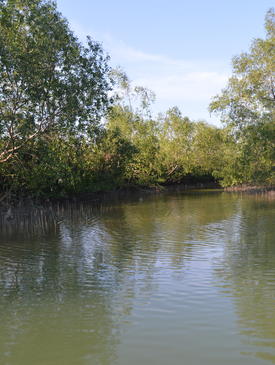Mangrove Forest Restoration and Rehabilitation Techniques
Summary
Indonesia has the largest area of mangrove forest in Southeast Asia. However, the rate of deforestation reached 40% within the last thirty years, largely due to coastal development and conversion to shrimp and fish ponds. This training aims to increase participant capacity to engage in mangrove rehabilitation. ELTI and local partners have been working together to maintain, restore and improve the function of a mangrove forest as proboscis monkey (Nasalis larvatus) habitat in Sungai Hitam, East Kalimantan. Proboscis monkeys are endemic to the island of Borneo and mangroves forests provide key habitat. Mangrove forest rehabilitation is aimed at ensuring the viability of proboscis monkey populations, while enhancing local community livelihoods.
Content
Day 1
- Opening ceremony
- Pretest
- Mangrove rehabilitation: how to do it?
- Understanding mangrove forest rehabilitation and restoration
- Understanding rehabilitation needs in the context of integrated mangrove management
- Learning from past mistakes in order to carry out an effective restoration program
- Recognizing disturbance factors and assessing the feasibility of restoring a site
Day 2
- Field trip
- Ecological assessment, hydrological assessment, disturbance and community perceptions
Day 3
- Tree planting
- Working group discussion and group presentation by participants
- Training evaluation
- Closing ceremony


